Hello Joel,
first, congratulations to the
new acquisition and the interesting salon you have been building around
it.
Much has been said and I am chipping in late. What I can offer
at this stage is an access to your rug that has remained unmentioned.
Together with other rugs that have been posted here it constitutes a group
that as far as geographical distribution is concerned, stretches from the
very west of Kurdish settlement areas to the Caucasus. I take this as an
indication of it belonging to a traditional group much favoured at some
time. For easier comparison I have pasted those rugs already introduced
here again; one is added by me, it had been up on auction earlier this
year at Rippon Boswell:
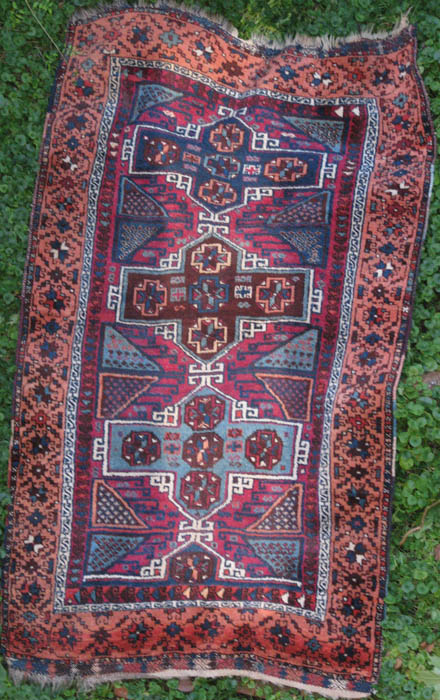
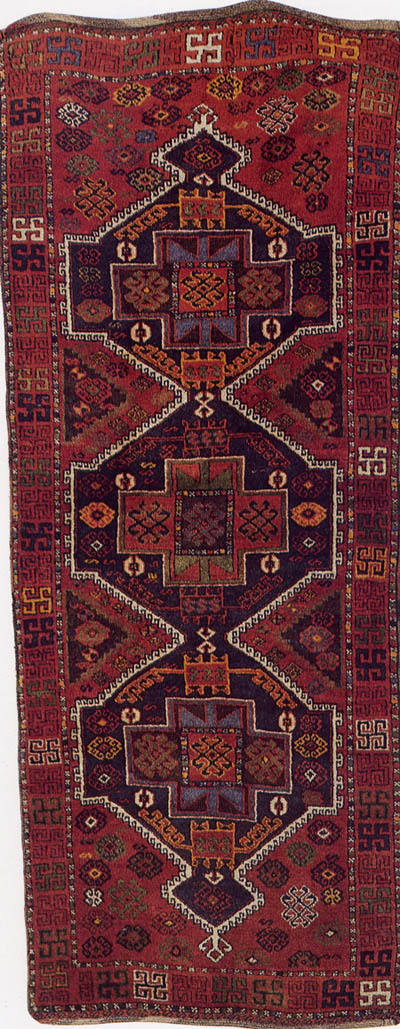
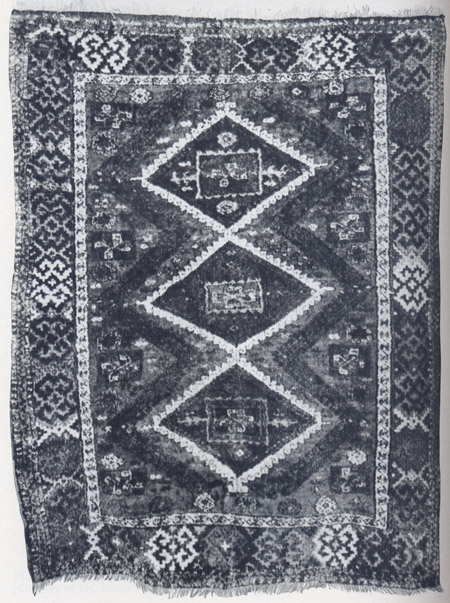

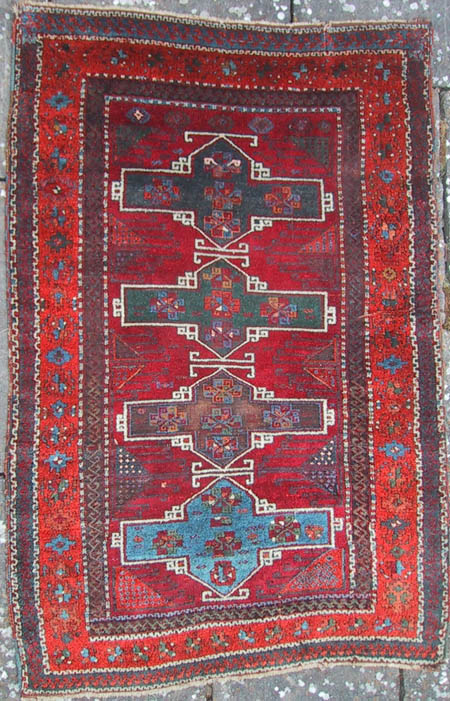
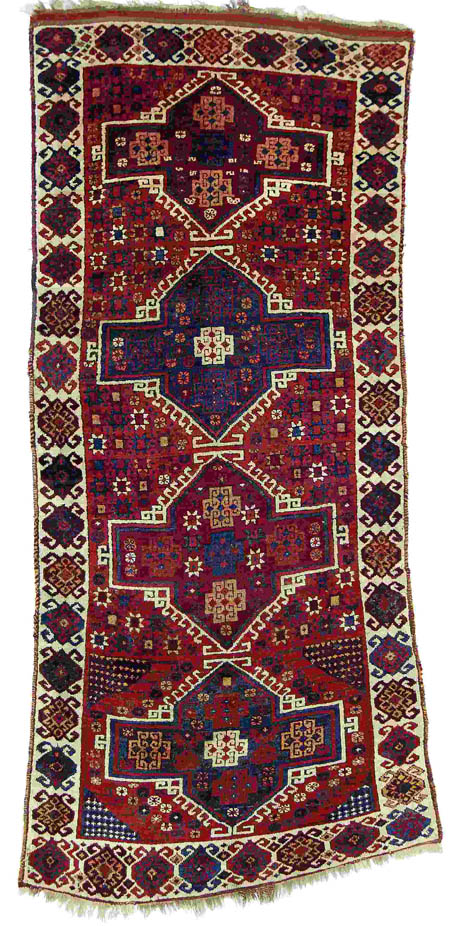
If we drew a line between Malatya
and the Karabagh and tried an estimate of the distribution of ethnic
groups, we perhaps would conclude that roughly 50% were Kurdish. This was
not always so. Just as an example, I offer the links to the English and
German Wikipedia sites on Hasankeyf, a Kurdish town located in what one
could call the heart of Turkish Kurdistan. The German site is more
particular about it and mentions, that in the 16th century 60 % of the
population was Christian. Who then were the others? Probably not 40%
Kurdish, but to some extend an indigenous population that with the wake of
Islam had turned Muslim from former Zoroastrism. This is because we are
talking of an area that was under Persian (Safavid) influence until the
battle of Caldiran in 1514 like the rest of East Anatolia, the Euphrates
having been the Persian border to the Roman Empire and its successor for a
period of about 1.800 years.
http://en.wikipedia.org/wiki/Hasankeyfhttp://de.wikipedia.org/wiki/HasankeyfIt seems
that Kurds moved down from the mountains filling the vacuum left by those
groups that left for Safavid Persia after Caldiran. Further east the Kurds
were granted privileges for their alliance with the Ottomans, including
such over their new Christian neighbours to have their livestock installed
in their stables during winter, setting them (the Kurds) free to guard the
border to Persia (also Harald Böhmer makes mentioning of this). This may
be the historical background for the gradual assimilation of rug designs
of a sedentary, partly Christian population by Kurdish newcomers to the
somewhat lower regions
And the Yörük lineage? There is one
particular rug of the group in existence that in quality of design ascents
far above all others:

We had discussed it at an earlier
salon. Christine Klose saw in it a Timurid link; Walter Denny would
probably count it to the classical Turkish rugs. I prefer to understand it
as a proponent of the ‘integrative’ type, marking the long spanned
transition from a Christian tradition to the Muslimic, in this particular
case to the Turkmen Anatolian one. In the earlier salon I had compared it
with rug A-28 in the Vakiflar and with an Afshar rug in the Hali article
by P. Tanavoli:
http://www.turkotek.com/mini_salon_00016/ms_16_t1.htmStructurally
all three are identical. It has to be remembered that the Afshar were
among the first Turkoman groups that reached Anatolia, and to the present
day they settle in Turkey as well as in Persia.
On the basis of
what we know I don’t think it is possible to determine whether the
Transylvanian triple-medallion rug is the direct ancestor of rugs like
yours (on the sloping path of fragmentation and conventionalism); I rather
think, yours belongs to an older group of rugs that existed before and
after, the Transylvanian rug having due to favourable conditions (Turkoman
court influence on the design at the time of Turkoman rule in Persia/East
Anatolia during the previous century?) ascended to an all time high in
design of its type. This in my opinion may be your Yörük link, and your
rug is as East Anatolian as East Anatolian can be, i.e. more than one
group had its fingers in the pie here, or better, on the
loom.
Regards,
Horst